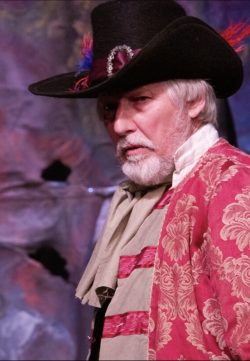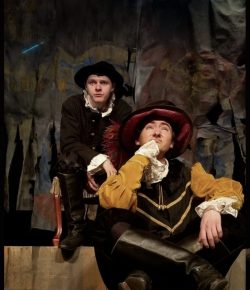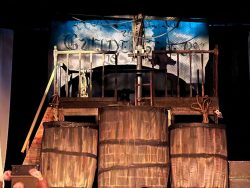 Tom Stoppard knew all about it when he wrote Rosencrantz and Guildenstern Are Dead, back in 1966 when he was still in his 20s. This is a play about two of the minor characters in Hamlet. As the murder mystery of Hamlet’s father unfolds around them, Hamlet’s two, interchangeable, childhood friends wait around until someone tells them why they have been called to Elsinore Castle and what is expected of them. It’s all so confusing that they are swept into the plot and then coughed out when they are no longer needed, never really knowing what has happened. They are a footnote in the Shakespearean tragedy … Rosencrantz and Guildenstern are dead, reports the English ambassador.
Tom Stoppard knew all about it when he wrote Rosencrantz and Guildenstern Are Dead, back in 1966 when he was still in his 20s. This is a play about two of the minor characters in Hamlet. As the murder mystery of Hamlet’s father unfolds around them, Hamlet’s two, interchangeable, childhood friends wait around until someone tells them why they have been called to Elsinore Castle and what is expected of them. It’s all so confusing that they are swept into the plot and then coughed out when they are no longer needed, never really knowing what has happened. They are a footnote in the Shakespearean tragedy … Rosencrantz and Guildenstern are dead, reports the English ambassador.
It really does help to have a working knowledge of Shakespeare’s play when you are watching Stoppard’s view from the sidelines. Cal Hopkins’s production at Shaftesbury Arts Centre ensures that the audience can see the story, although the swapping of characters in the court of Elsinore doesn’t make it easy. The play starts with a seemingly-endless game of coin flicking, as the amorphous young men, played with great skill, timing and subtlety by Ethan Speed and Harvey Cormack (both graduates of the Arts Centre’s youth theatre) ponder the scientific and philosophical nature of probability. They’re just hanging out, waiting for something to happen, and constantly questioning how they got into their current position – “Well, here’s another nice mess you’ve gotten me into,” as Laurel and Hardy might have said, swapping the blame and forgetting the provenance.
 Their game is interrupted by the arrival of a troupe of travelling players, and the conversation changes to delve into the relationship between performers and audiences. Jerome Swan gives a barnstorming performance as the player king, coaxing out of his troupe moments of pathos, farce, violence and passion at the same time as bemoaning the lot of actors in an increasingly selfish and philistine world … it’s all astonishingly timely!
Their game is interrupted by the arrival of a troupe of travelling players, and the conversation changes to delve into the relationship between performers and audiences. Jerome Swan gives a barnstorming performance as the player king, coaxing out of his troupe moments of pathos, farce, violence and passion at the same time as bemoaning the lot of actors in an increasingly selfish and philistine world … it’s all astonishingly timely!
Hamlet (Seth Collis) soliloquises, pulls a dead body on and off stage, plots with a seaman, changes letters, dies…. Jamie Bilby as the girl actor puts on and takes off wigs and skirts, joining Marie Stubbs, John Parker, Carl Davies, Bryan Farrell and Mary Flanagan to perform other roles helter skelter until the denouement of the Shakespearean tragedy has banished the eponymous heroes from the stage.
 The production is imaginatively done, backed with a clever and versatile set, a vigorously sung shanty, and main characters who flit in and out of the corners of your eyes as R and G, typical teenagers, try to make sense of their predicament and look for a way out.
The production is imaginatively done, backed with a clever and versatile set, a vigorously sung shanty, and main characters who flit in and out of the corners of your eyes as R and G, typical teenagers, try to make sense of their predicament and look for a way out.
It is a challenging play for the cast, and for the audience, and after almost 60 years retains its clever bite and what we now call relatable confusion, prattling of what great men do, and seeking a position for ourselves in the maelstrom of other people’s significant lives.
GP-W